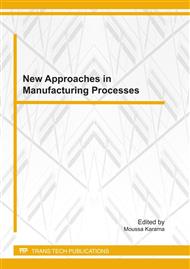p.67
p.77
p.85
p.95
p.107
p.117
p.125
p.135
p.147
In Situ Determination of Glass Transition Temperatures of Epoxy Adhesives in Structural Ceramic Assemblies
Abstract:
A method is described for measuring the glass transition temperature (Tg) of epoxy joints bonding ceramic (SiC) substrates. This method is based on the strain measure of a single-lap joint subjected to a temperature variation. The resulting displacement (d) is observed as a function of the temperature (T) by means of a contact strain gauge extensometer. Thus Tg value can be determined using (d-T) curves recorded. The influence of joint parameters (joint thickness and overlap length) and of other parameters such as the applied load and the surface state of substrates were studied for a structural epoxy adhesive showing different thermomechanical behaviours. The results show that it is possible, with appropriate experimental conditions, to measure Tg with this method and to find Tg values similar to those found by classical techniques such as the static thermomechanical analysis (TMA) and the differential scanning calorimetry (DSC). This method shows similarities with TMA, but it has the advantage to allow the thermomechanical analysis of adhesives without destructive sampling of joints.
Info:
Periodical:
Pages:
107-116
Citation:
Online since:
June 2011
Authors:
Price:
Сopyright:
© 2011 Trans Tech Publications Ltd. All Rights Reserved
Share:
Citation:


